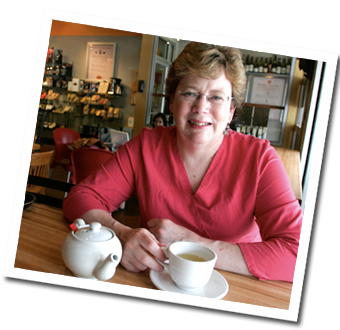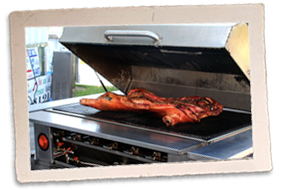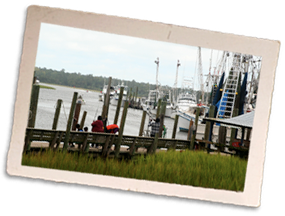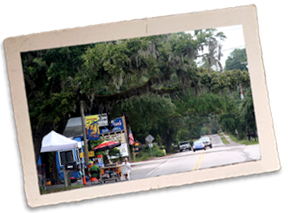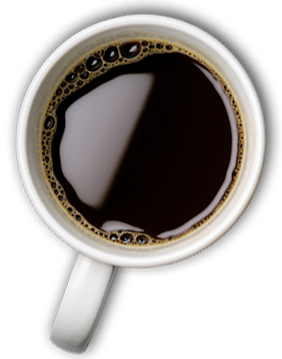|
Both my parents smoked — my father,
Winstons, and my mother, Salems, the one with a menthol filter, because, she
said, it was for ladies. When I was old enough to become rebellious (which my
parents would have claimed was five minutes after I left the womb), I made it
clear that I disliked cigarette smoke, the bitter odor that permeated
everything I wore, and stung my nose and eyes. One day, when I was a teenager,
a haze from my father’s cigarette drifted by me, and I fanned the air and made
a disgusted face. With a charming smile and a futile gesture at holding his
Winston away, he said, “Smoke follows beauty.”
It
was a father telling his awkward teenage daughter that she was beautiful in his
eyes but using a compliment to cover the unpleasant fact that his cigarette
smoke offended.
The
comment was freighted with conflict, much like the town where I grew up, Winston-Salem,
the hometown of R.J. Reynolds Tobacco Company since 1875. The town’s identity was
so entwined with tobacco that I had to explain to a newcomer that it wasn’t
named after the cigarette brand, but
the other way around. My parents, unlike many residents, were neither tobacco
farmers nor employees of the company, but the influence of the industry was as
pervasive a part of my life as their ashtrays in the den.
[Section break]
Without tobacco, Winston-Salem might
have been just another Piedmont town, fortunate to have railroads but not much
else. As with the state as a whole, it’s a complicated relationship. For
generations in North Carolina, tobacco and cigarettes built homes, sent
children to colleges (which it also helped establish), funded the arts, and
made small towns prosper. Reynolds money relocated Wake Forest University from
the Wake County town where it got its name to Winston-Salem.
And yet, since
my childhood, it's been impossible to ignore the fact that tobacco and
cigarettes have sickened and killed millions of people.
But
I didn't look at the beautiful Art Deco Reynolds Building, completed in 1929
for company offices and designed by the same firm that built New York’s Empire
State Building, and think of a public health crisis. Long a crown jewel
of the city skyline, I was fascinated by the tobacco leaf design in copper that
frames the entrance. I’ve always loved that building, the shape gracefully
piercing the downtown skyline (the top lit with red-and-green lights at
Christmastime) and the fanciful symbols that I could read like a book. I'm
grateful that it's still there, now as a hotel and home of an elegant
restaurant named Katharine Brasserie, after the wife of the R.J Reynolds
Company's founder.
I
started learning about our tobacco heritage on elementary school field trips.
One year, teachers took us to a tobacco farm, where we fidgeted in the hot sun while
a farmer explained how the broad leaves grew. Bobby Costner tried to put a
tobacco hornworm down my back. (Why do I remember? Google it. Those worms ought
to be in a horror film.)
The
next year we visited a tobacco auction, and I was entranced by the mystery and
music of it, the auctioneer chanting in what sounded like a foreign language,
men in suits merely raising a finger to make a purchase. Sales happened in
fluid motion past the stacks of leaves, which were no longer green but aged to
a golden brown. The scent of the cured tobacco was rich, spicy and sweet, nothing
like a burning cigarette. The whole town seemed to be wrapped in this pleasant perfume
every fall as I rode home from school past rows of tobacco warehouses.
The
5th grade trip was to the cigarette factory at Whitaker Park, which
at night had changing colored lights on the fountains out front that I remember
going to watch at Christmas with my parents. At the end of the tour,
after seeing thousands of white tubes traveling up, down, and over conveyor
belts like people on roller coasters, we were given free cigarettes.
I
followed my parents’ firm instructions to take only the Winstons and Salems for
them, not what my mother called “those nasty Camels.” Today, people gasp when I
tell this story, about preteens being given handfuls of cigarettes. It was the 1960s
in a town that tobacco built, and nobody thought anything about it, even if a
few kids might have smoked the freebies themselves.
Even
if they didn't light up, kids were still important. If their families farmed
tobacco, they were needed to help bring in the crop and received excused
absences from school to do so. I told two farmers’ kids once that they were
lucky to be able to skip. “You’ve never worked in a tobacco field,” they said
grimly, looking like they would rather be in school, even if it was in math
class.
My
city high school was built in 1923, using land and money provided by the
Reynolds family and named for the company founder, Richard J. Reynolds. It had
a smoking pit for students, a sunken brick area outside the cafeteria, which
filled up every lunch period. A bored teacher monitored it to detect the aroma
of anything that wasn’t tobacco. It was the mid-1970s. All the high schools had
designated smoking areas. “They thought it would cut down on smoking
in the bathrooms,” recalled a friend who attended RJR’s rival, Mount Tabor.
Over
the years, as science began to reveal how lethal cigarettes are, bans on
smoking in public places started to pop up around the state except, not
surprisingly, in Winston-Salem. My father could take or leave smoking. However,
my mother saw the restrictions not as a matter of loyalty to the hometown
company but as a threat to her personal freedom. While visiting me in Raleigh,
where many stores and restaurants had banned smoking before statewide legislation
in 2010, she and I stopped to pick up a few things at a grocery store. She did
what she always did: light up. People glared. I whispered to her that smoking
wasn't allowed. She glared back at the other shoppers, threw her cigarette on
the floor with a flourish and stomped it. Then she complained in the car all
the way to my house, where, she reiterated, she wasn't allowed to smoke either,
a poor mother forced out into the freezing cold by a heartless daughter.
The
first time my mother and I went to her favorite Winston-Salem restaurant after
the legislation and she couldn't puff her Salem, I inwardly cheered. Not
outwardly. I didn't have a death wish.
[Section break]
People used to smoke to be rebellious.
I rebelled by not smoking. I don’t let people smoke in my house and will
complain loudly if I’m subjected to it elsewhere. Not in my car, either,
although I have broken that rule one time. My father had died suddenly, at the
relatively young age of 68, from a massive heart attack, and I was driving my
mother to a funeral home to make arrangements. I knew that if she had ever
needed a cigarette, she needed one then, so I pushed the button to roll down
her window an inch or two, and said, “Go ahead.” She lit up a Salem in silence.
Thirteen
years later, she died from emphysema that was fueled by her chain-smoking habit,
which had turned the walls of her living room from cream to brown.
I
don't get back to Winston-Salem often, but recently I went to Reynolda House,
the Reynolds family home built in 1917 which is now an art museum, to see an
exhibit. As I drove through the grounds, I remembered spring days my
high-school friends and I spent in the gardens there, walking beneath the
weeping cherry trees and sprawling on the grassy lawn in deep conversation. I
still have a photo from one of those days, snapped with my trusty Instamatic,
of blue sky through pink blossoms.
So
much beauty built from clouds of smoke.
Return to Articles & Essays |
